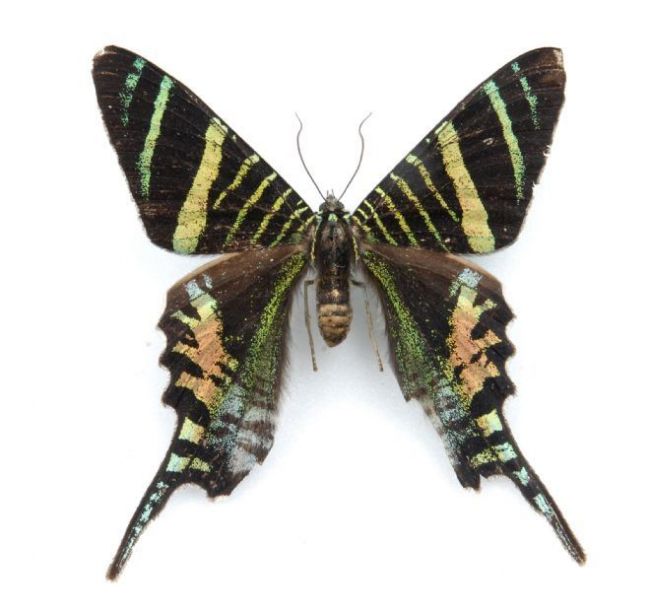Minibeasts come in many different shapes and sizes. Here are a few from the collections at Leeds Museums and Galleries.
Orchid Bee
This little cutie is an Euglossine Bee. (Euglossine is pronounced You-Gloss-Sign). Lots of people call them Orchid bees, which is much easier!
She (or he) is tiny in real life: only the size of a fingernail. Their long, long tongues are used to get nectar from flowers. They push their tongues right down to the bottom of the flower to lick up the sugary water. Orchid bees live in South America.
Sloane's Urania
This marvellous minibeast is a type of moth. Moths and butterflies are closely related – the only real difference is their antennae. Have a close look at this one. Almost all butterflies, and almost no moths, have clubs at the end of their antennae.
This one is a ‘Sloane’s Urania’. They used to live in Jamaica. Now, very sadly, you will only find them in museum collections. They became extinct in about 1900.
Praying Mantis
These top predators sit very still and upright with their arms pressed together. They look exactly like they are praying. In fact they’re waiting for something to walk past so that they can go for a grab, flicking out their arms. Can you see the sharp spines they use to snag prey?
Praying mantises are often bright colours and amazing shapes: to look like their environment. Camouflaging themselves means that prey are less likely to see them in the leaves.
Cuban Land Snails
Can you guess where Cuban Land Snails (above) come from? Do you think they live on land or in water? They are very beautiful, but sadly this has put them in danger. People love collecting and selling their shells. This means that there are less and less in the wild. Each shell is different but they are all the same species.



